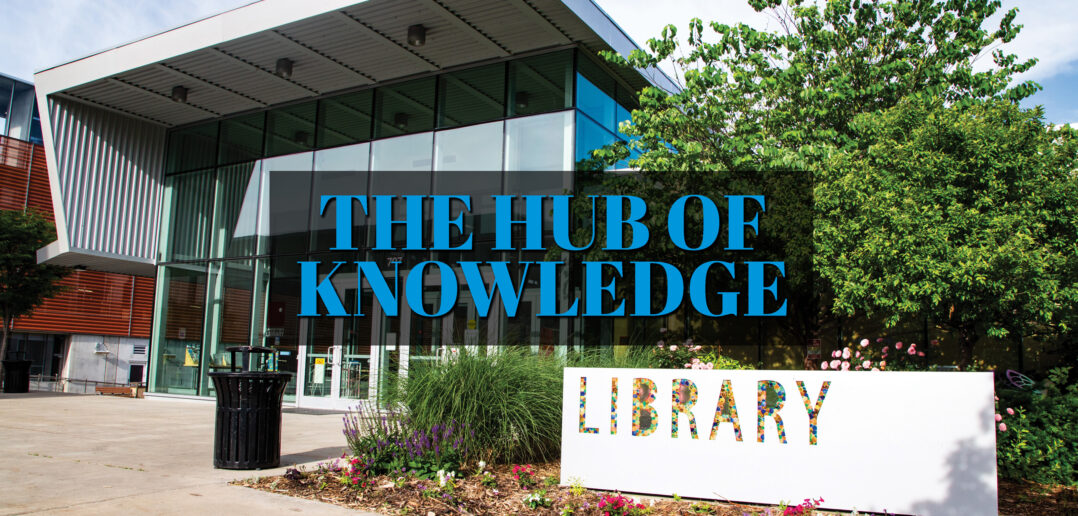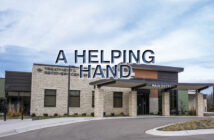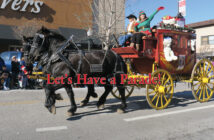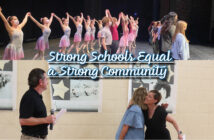| story by | |
| photos by | Steven Hertzog |
| OPEN A PDF OF THE ARTICLE |
Staff, increased resources and digital innovation are the pillars that have led to the success and longevity of the Lawrence Public Library.
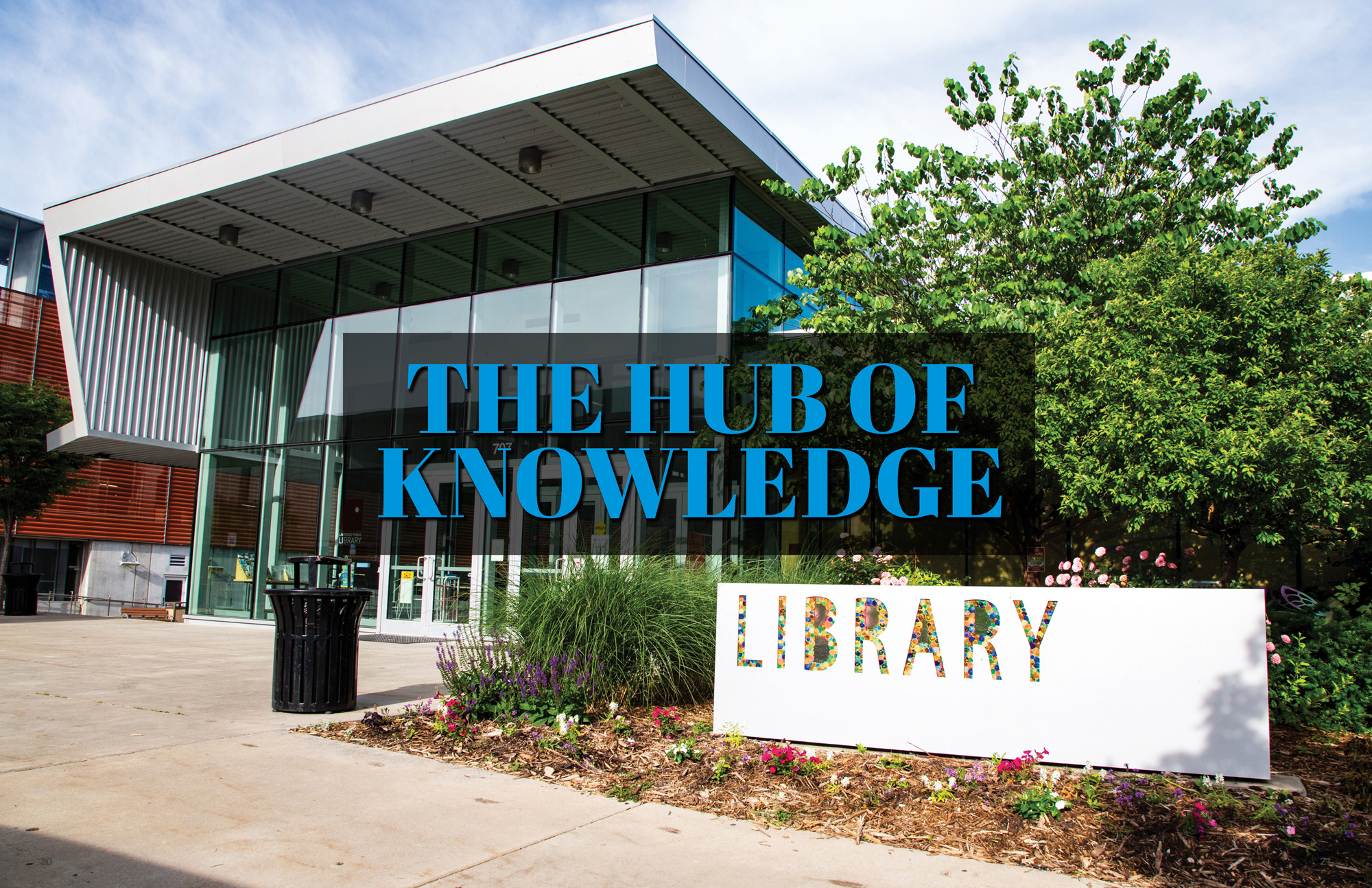
NonProfit: The Hub of Knowledge
Former Mayor John Nalbandian once told me that one of the main roles of a city commissioner is to ensure the vitality of Lawrence’s societal anchors. He defined societal anchors as places where people can visit to feel a sense of community, especially when they are feeling down and out. The Lawrence Public Library (LPL) is one of those societal anchors.
Since its creation in 1854 (only a month after the town was founded), the library has been a staple of the Douglas County community. Brad Allen is the executive director of the library and recently celebrated his 10th anniversary in that role. He, along with the staff, attribute the success and longevity of the library to the people of Lawrence. “The town is built to like libraries. They want it to succeed, so to not do it well is lame. We have an audience wanting us to succeed,” Allen explains.
Kathleen Morgan is the director of development and community partnerships for the library. She says that libraries are in the town’s DNA. “The interest and passion for education and reading and libraries was here from the get-go. Our town loves and trusts its public library.”
Heather Kearns has been the marketing coordinator for the library since 2015. She argues, “We have an incredibly supportive town that loves our library. A lot of our success is having people talk about us and being a voice box for our efforts.”
While we would all love to take credit for our library, the three biggest factors attributed to its success and longevity have been the staff, the growth in resources and the innovation of digital inclusion, Allen explains.

Left, top to bottom: Heather Kearns, Marketing Coordinator ; Kathleen Morgan, Director of Development & Community Partnerships ; Nelson Johnson, Musician & Producer at work in the LPL Sound Studios ; Right:Brad Allen, LPL Executive Director jams on guitar with Kathleen Morgan & Heather Kearns
The Staff
The Lawrence Public Library staff asks good questions, is naturally curious and cares about the work they are doing. Allen sees authenticity as key to the success of his staff. “I believe in our staff being authentic human beings, and I think people in our community respond to that. I see human beings that care about people when they walk in. I think that human part really matters.”
“I work with some of the smartest, funniest, creative people I’ve ever worked with,” Kearns adds. “Libraries have shared common denominators, and it takes people to make libraries interesting and make people aware of what we have.”
Goals of the library staff include keeping it interesting and always asking, “What is the next project?” Allen understands there is a middle space between growth and burnout. “LPL’s motto is ‘up for whatever,’ but it isn’t sustainable. We are trying to figure out what our boundaries are. How do you stay in a culture of yes but not rub everyone down to a pencil nub?”
Growth in Resources
The Lawrence Public Library doesn’t take a bare-bones approach to what a public library has to provide. That has led to its longevity.
“It’s about relationships and access and equitable service. Anyone that wants our service, what can we do to make it easier for them? That’s what I’m more passionate about than I used to be,” Allen says. The staff at LPL continually makes a conscious effort to ask the community what they want and is responsive to its specific needs.
“When the renovation happened in 2014, a lot of people would come up to me and congratulate me on my new library, and my response was, ‘It’s not mine. You paid for it,’” Allen says. “We are here to provide access to all the things that are in this building. I don’t run it. This is a public building that we are stewards for.”
The library serves every age group and provides countless services. There is a focus on pre-K kids to help them learn to love reading and become excited about school. For adults, there is a focus on helping them learn new skills and find a new job. Allen sees the Lawrence Public Library as especially important for life transitions. “Retirement is a life transition, having a kid, moving into a new town. We met them in a moment of need and help get them set up,” he explains.
The library currently has an information services department and a specialist who knows the ecosystem of Lawrence. The goal is to connect people with the hyperlocal resources one might not know. “Partnerships is one thing I wanted to do with this building,” Allen says. “Working in partnerships is how you make a town thrive, because everyone is accountable to each other. Our job to shine a light on other nonprofits …. When we have this building, we can bring people in, and they can share that knowledge. There are people doing great things, but they might not have the space to bring people in.”
Some nonprofits even have office hours at the library. The Willow Domestic Violence Center has been using the library as a place to meet with clients for the last few years. Will Averill, director of community engagement at Willow, says, “The library has been an invaluable resource the last few years, allowing us to have an advocate available twice a month to meet with clients. For domestic violence survivors whose phones may be monitored by their abuser, this is a safe public place they can come to get help when they may have no other options.”
Morgan says the library is a “great community hub. It’s a place people can come and find the help they need with no stigma attached to it.” Coming to the library for a class or to get help with a referral can perhaps be less intimidating than going to a clinic or another building. For example, the library has smart recovery classes for individuals struggling with drug addiction.
Some of the most popular programs at LPL surround pre-K children and retirees. “The people on both ends of the life cycle are the people that can need us the most,” Allen says. The library continues to help children grow their love of reading. Storytime with Linda Clay is an absolute treat.
The library also has developed and advanced programs for recent retirees. The retirement bootcamp program, for example, has been a huge success. With help from Cathy Hamilton and the Friends and Foundation fund, this resource has helped the older adult population with what can be one of the biggest transitions in one’s life. Sample classes have centered on how to stream on your TV, how to write your own obituary and health-related issues. As they do with every resource, the library partners with other organizations so it does not duplicate services.
The Friends and Foundation fund plays a role in the success of these programs. As Kearns puts it, “The volunteers and donors help us make the library as great as it is. It’s invaluable to have the generosity of time and money, because people believe in us.”
For example, Jeff and Mary Weinberg pay for a streaming service called Kanopy that streams international films and award-winning documentaries (32,000 films are available). Every month, anyone with a library card can stream up to five films. This is just one of several resources that were developed because of the community involvement.
Another part of the success of the library has been the push to make it state of the art. While the pipes may still be 50 years old, the technology is new. The Sound + Vision Studio is an important content-creation station for the library. “Having a place where people could do really good audio/visual work for free with small assistance from the staff was more important for the community than 3D printers and fabrication devices,” Allen says.
The Studio is a fully equipped audio and video creation space that caters to solo musicians, entire bands, voiceover artists, filmmakers, photographers, graphic designers and more. Joel Bonner, the Studio specialist, says that “it is the perfect place to learn how to create your own audio and visual art, or serves as a workspace for established creators in the field. All with just a library card.”
The advancements in technology at LPL also extend to the conference and meeting rooms. The meeting rooms at LPL are now fit for more hybrid work, with people physically in the room and others logging in remotely. There are now microphones built into the ceiling and Logitech camera and speaker systems available. The goal is to continue to make the meeting rooms more immersive.
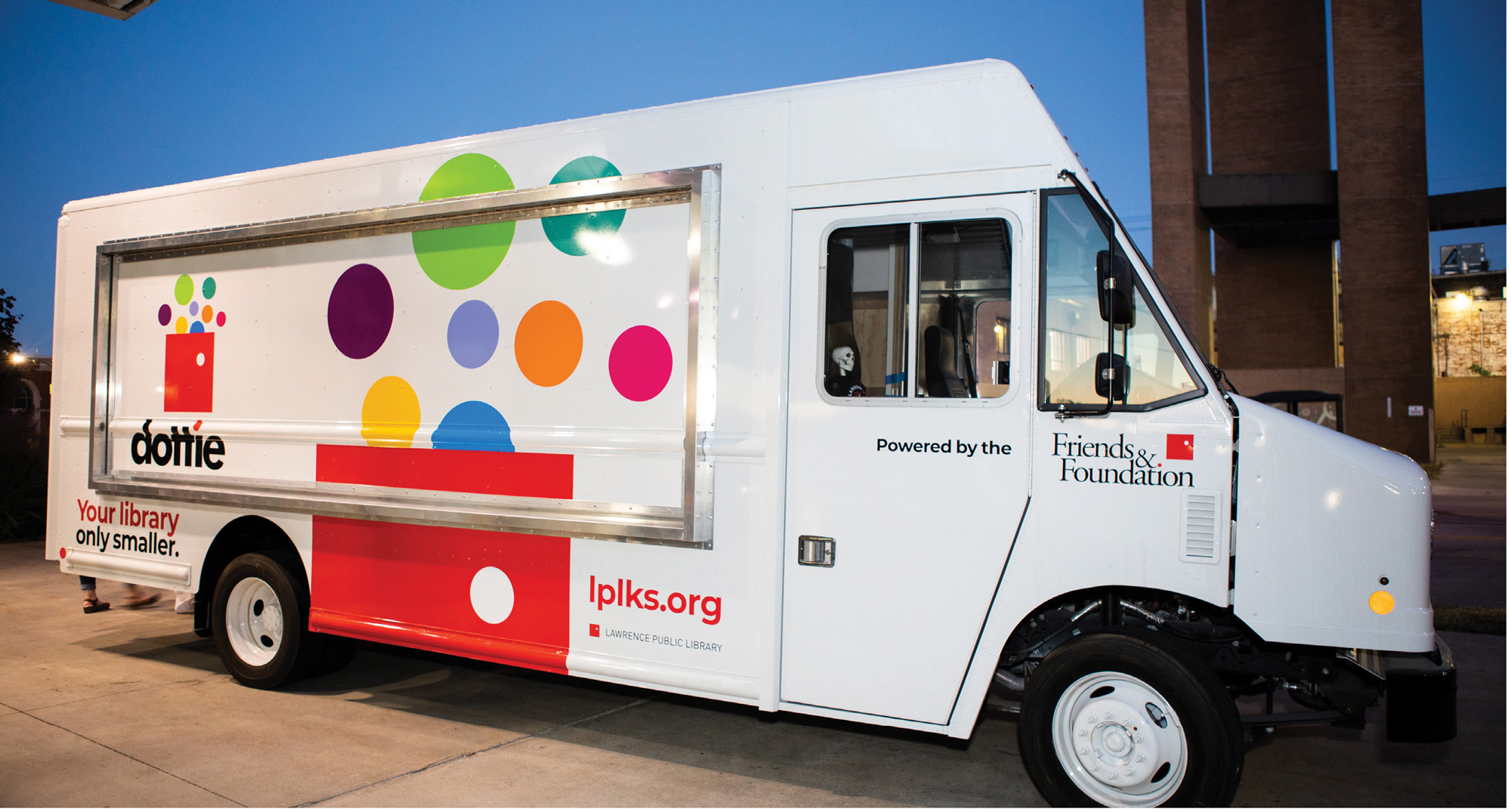
Dottie, the LPL mobile book library – photo by Ann Dean
Digital Inclusion
One of the goals of the library in the past couple of years has been digital inclusion. This includes providing digital access to the resources of the library and engaging the public digitally. For example, the staff wants to allow people to access the auditorium digitally if they can’t make an event in person. They want to continue to enhance the user experience on the website. “COVID taught us that there are a variety of ways that people want to engage,” Allen says.
With marketing coordinator Kearns at the helm of this digital inclusion, the LPL has revamped its website, enhanced its YouTube channel, created a TikTok channel, grown its Instagram followers and continued to make its digital online presence more creative than ever. LPS uses its YouTube channel for storytime. Facebook Live meetings or live events are now saved to the YouTube channel, as well.
The LPL website has also been an area of focus for the staff. Kearns knows she can’t duplicate the in-house experience exactly but is coming close. “We want the website to be something else you weren’t looking for and end up checking out books you weren’t anticipating doing. Our website is really rich with community stories and community resources. One of my goals is to make it more obvious, clear—so one doesn’t have to dig for what they want. We don’t have a staff member there greeting you when you enter the website, so we want to make it as welcoming as possible.”
Perhaps one of the biggest digital success stories has been the new TikTok channel. A teen librarian named Sahara Scott helped start the channel to cater to the teen zone and expose the library to teens. Scott makes videos based on questions she receives about the teen zone. The videos include information about the library’s resources and what it means to be a librarian. One of her TikToks has more than 200,000 likes. Kearns says Scott has kids coming to the teen zone who found LPL on TikTok. “I’ve never had teens say they saw us on social media until now. Holy cow, these people are following us,” Kearns says. Her instructions to Scott are simple: “Just make sure you champion what we do and have fun doing it. Serve brownies but hide some vegetables in them.”
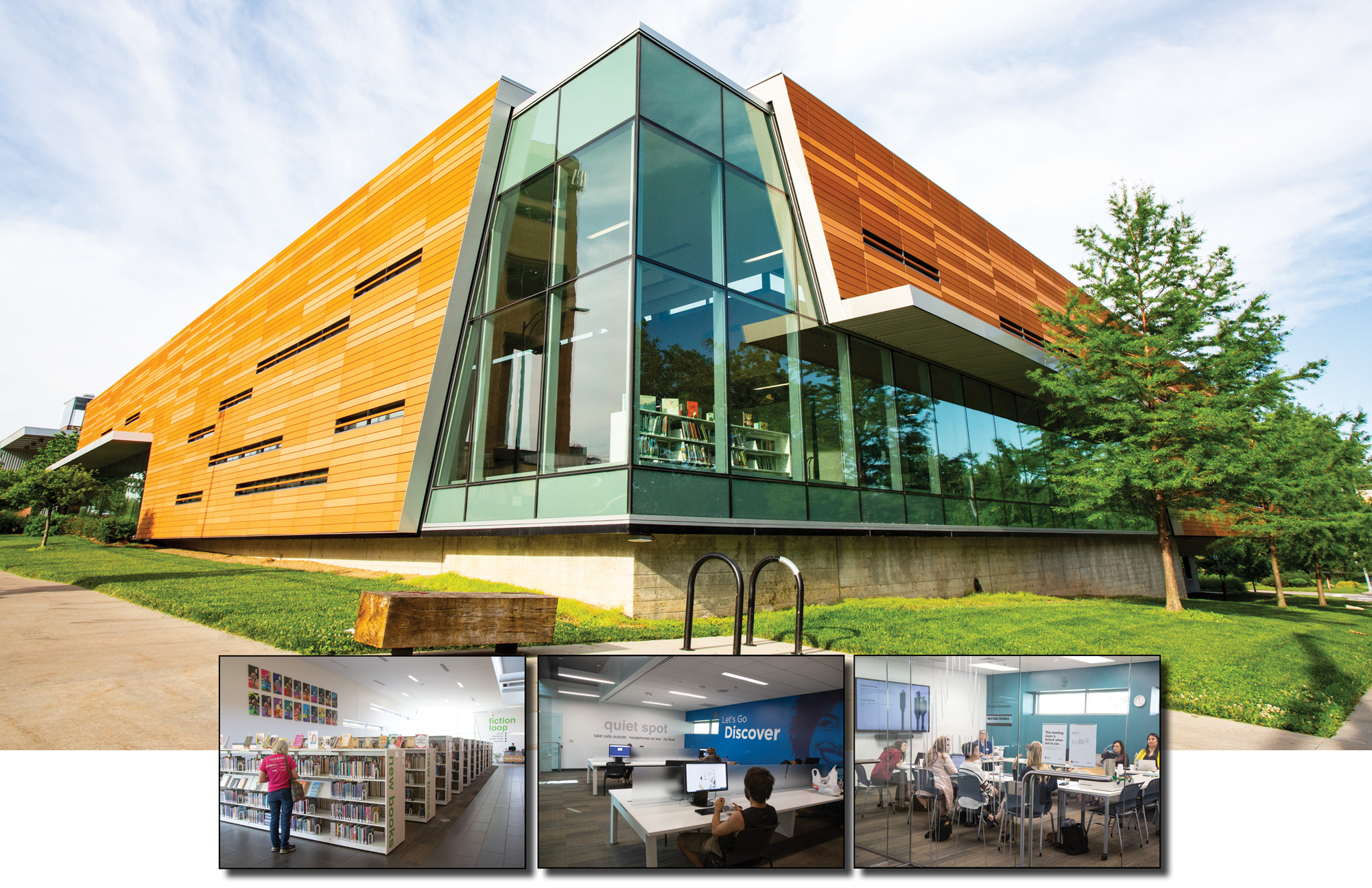
Corner of library from Vermont and 7th. (l to R) Woman searches through books, a computer room for visitors, and a meeting room.
The Future
In the most recent strategic plan for the library, the word innovation was replaced by the word growth. That word is important for the future of the library. “When I say growth, I mean actual, literal growth — do we need to do that? How can we grow in a way that we are equitably and accurately serving this town?” Allen asks.
“Growth means making sure we are providing library service to everyone in the community. Public libraries need to reflect their community,” director of development and community partnerships’ Morgan explains.
For Kearns, outreach services will start to round out what growth means. “Growth for me is what is drilling down to find out what are people using the library for and find a way to respond to community needs.” A large part of that outreach is a new idea called Dottie, which launches in June. The LPL partnered with the KU School of Architecture to retrofit a UPS truck. This truck is similar to an old book mobile that one does not walk into. The books on Dottie are on the outside. Dottie is for people who can’t make it downtown but still want some of the resources the library provides. “How do we get out into the community and make the opportunity for people to get these things for their families? It’s an equity machine. That is its goal,” Allen says of Dottie.
As Morgan explains, “Most communities of this size have one or at least two branches of their library. Using Dottie will help get the information we need on a new branch. It’s a question we need to ask our community [whether we need another branch].” The questions will continue as Dottie starts out on its journey into the streets of Lawrence. For Allen, those questions also involve our dreams and possibly his. “I’m curious to see what this town wants from its library. And I’m curious to see what comes of that. I’m curious to see what people’s dreams are. It’s time for us to ask people to dream about what they really want to invest in.”

